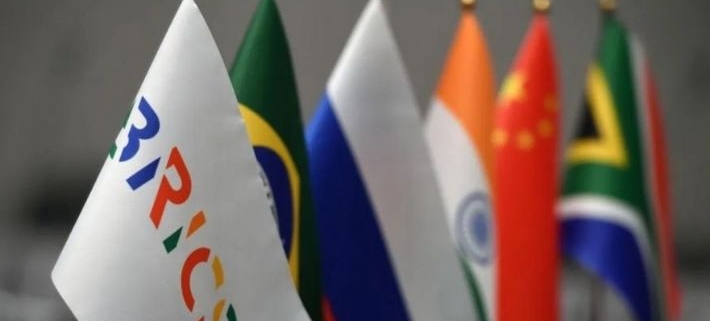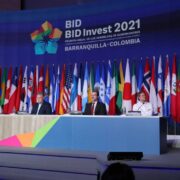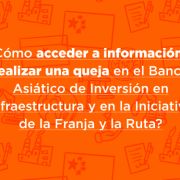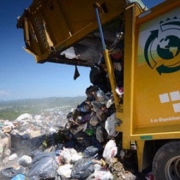Argentina’s entry into the BRICS: what does it mean?
On August 22-24, the 15th BRICS Summit took place in South Africa, where heads of state of the member countries (Brazil, Russia, India, China and South Africa, whose acronym is the acronym) met at a high-level forum to discuss key issues for the most prominent emerging economies.
“Below, we offer a google translate version of the original article in Spanish. This translation may not be accurate but serves as a general presentation of the article. For more accurate information, please switch to the Spanish version of the website. In addition, feel free to directly contact in English the person mentioned at the bottom of this article with regards to this topic”.
During the XV Summit, the Heads of State met with members of the business sector in dialogue with the New Development Bank to outline the main axes that will guide BRICS policy. This year’s agenda included the potential “de-dollarization” of global trade, with China and the yuan at the forefront of this ambition, as well as the possible effects of the Russian-Ukrainian war on cooperation between member countries. However, the emphasis was on the expansion of BRICS to include the countries that have submitted official applications for membership: Argentina, Iran, Saudi Arabia, Ethiopia, the United Arab Emirates and Egypt.
Finally, during the summit, Argentina, as well as the rest of the countries mentioned above, was formally invited to join the BRICS as from January 1, 2024. Since it is an international forum that does not imply a supranational integration process, the decision to join will be at the discretion of the Executive Power that takes office on December 10. Some of the presidential candidates, such as Javier Miliei (La Libertad Avanza) and Patricia Bullrich (Juntos por el Cambio) have expressed critical positions regarding the accession, alleging a strong difference with the international actions of the BRICS countries, especially in reference to their violations of international law, such as during the war in Ukraine.
In this sense, it is possible to identify some key elements regarding the implications of Argentina’s participation in the BRICS. Mainly, reference is made to the quantitative dimension of the BRICS group, which concentrates 40% of the world’s population and 25% of the world’s GDP, a percentage that, together, equals that of the United States (World Bank Data Center). In addition to these numbers, there are those that link Argentina specifically with the founding countries: the main recipients of Argentine exports include Brazil, China and India; while its main imports come from China and Brazil (OEC).
The role of the New Development Bank
The economic factor becomes more relevant if the possibilities of financing by the New Development Bank (NDB) are taken into account. The BRICS development bank was founded by the member nations of the bloc in 2014, during the sixth summit held in Fortaleza, Brazil. This international bank is positioned as an alternative to the IMF and the World Bank, with credits oriented mainly to infrastructure projects and which, according to the official website, prioritize “high-impact operations that are environmentally smart, resilient, technologically integrated and socially inclusive”.
Currently, the New Development Bank finances projects in only 6 countries (China, India, Brazil, Russia, South Africa and Bangladesh) for a total of US$ 32.8 billion. According to sources such as Ámbito Financiero, Argentina is already negotiating with Dilma Rousseff, who holds the presidency, a possible credit line that would help alleviate the pressure on the debts with the IMF. In order to join the NBD, Argentina must make a capital contribution of “US$250 million in sovereign bonds held by the Treasury, from the Guarantee and Sustainability Fund (FGS) of the National Social Security Administration (Anses) and other sources” (La Nación). A key element of participation in the NBD is that in their general strategy they commit to grant 30% of their loans in local currency of the recipient country, in order to mitigate the risk of foreign investment (NBD). In the case of Argentina, this could diversify the sources of financing and reduce dependence on the dollar and the IMF. However, there are still concerns about the bank’s transparency and the possibility of access to public consultations or information on the investment process (Diálogo Chino).
Since its creation, BRICS has positioned itself as an alternative multilateral cooperation forum for emerging economies, which emphasizes multipolarity and a “de-ideologized” positioning, prioritizing informal dialogue and trade exchange. In this sense, Argentina’s entry into the forum presents a space for rapprochement with the large economies of the world that are disputing an alternative model of financing for development.
More information
- Visualizing the BRICS Expansion in 4 Charts – Marcus Lu (2023)
- Is Argentina getting closer to the BRICS? – Fundeps (2020)
- Analysis of the New BRICS Development Bank – Fundeps (2020)
- Council of the Americas: Patricia Bullrich and Javier Milei promised to break with the BRICS : After Argentina joins the economic bloc – Página 12 (2023)
- New Multilateral Development Banks | Fundeps
- Is it convenient for Argentina to join the Brics? – LA NACION – Federico Merke and Oliver Stuenkel (2023)
- How the New Development Bank that the Government is excited about works – LA NACION – Paula Urien (2023)
- New Development Bank – New Development Bank Official Site
- Argentina (ARG) Exports, Imports, and Trade Partners | OEC – The Observatory of Economic Complexity – OEC
- New perspectives on the new BRICS bank – Chinese Dialogue (2023)
Author
Lourdes Álvarez Romagnoli
Contact
Gonzalo Roza – gon.roza@fundeps.org
*Source of the image: El Cronista






